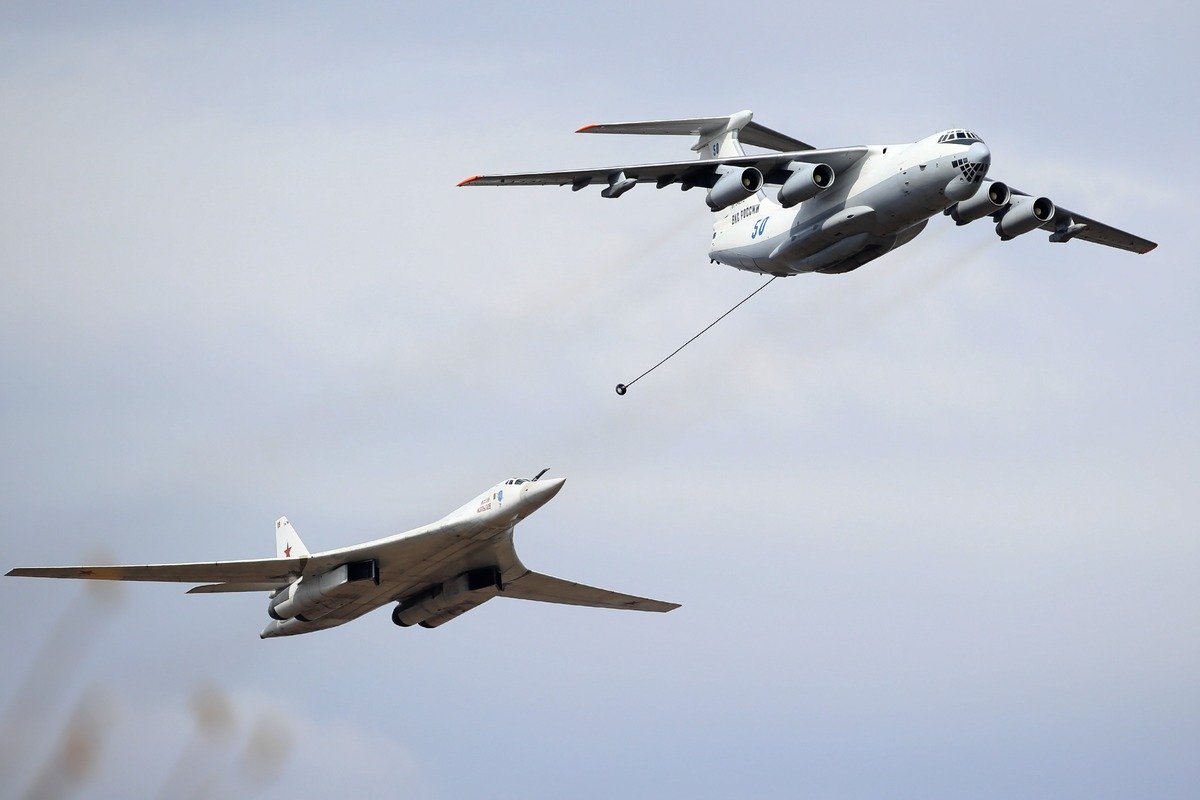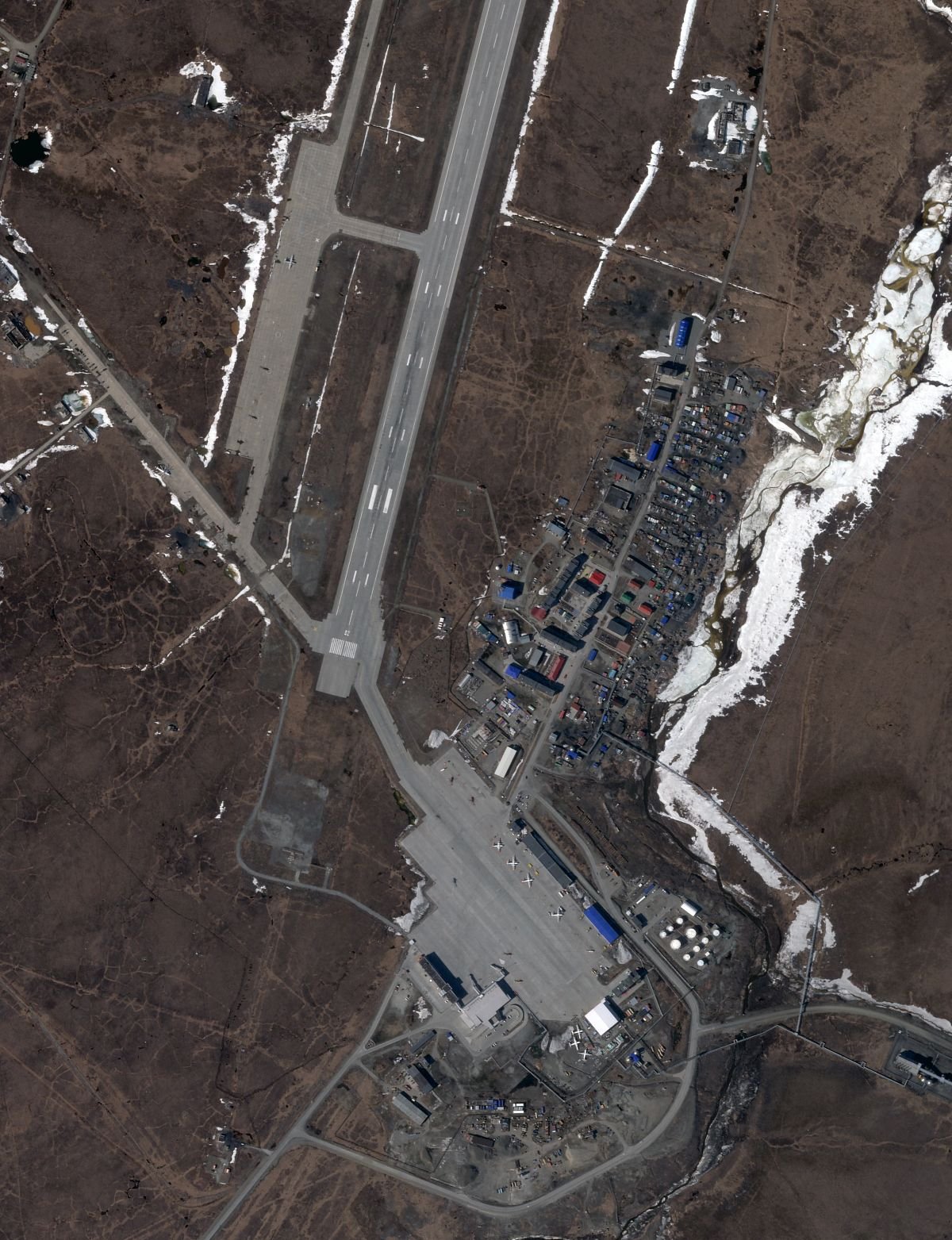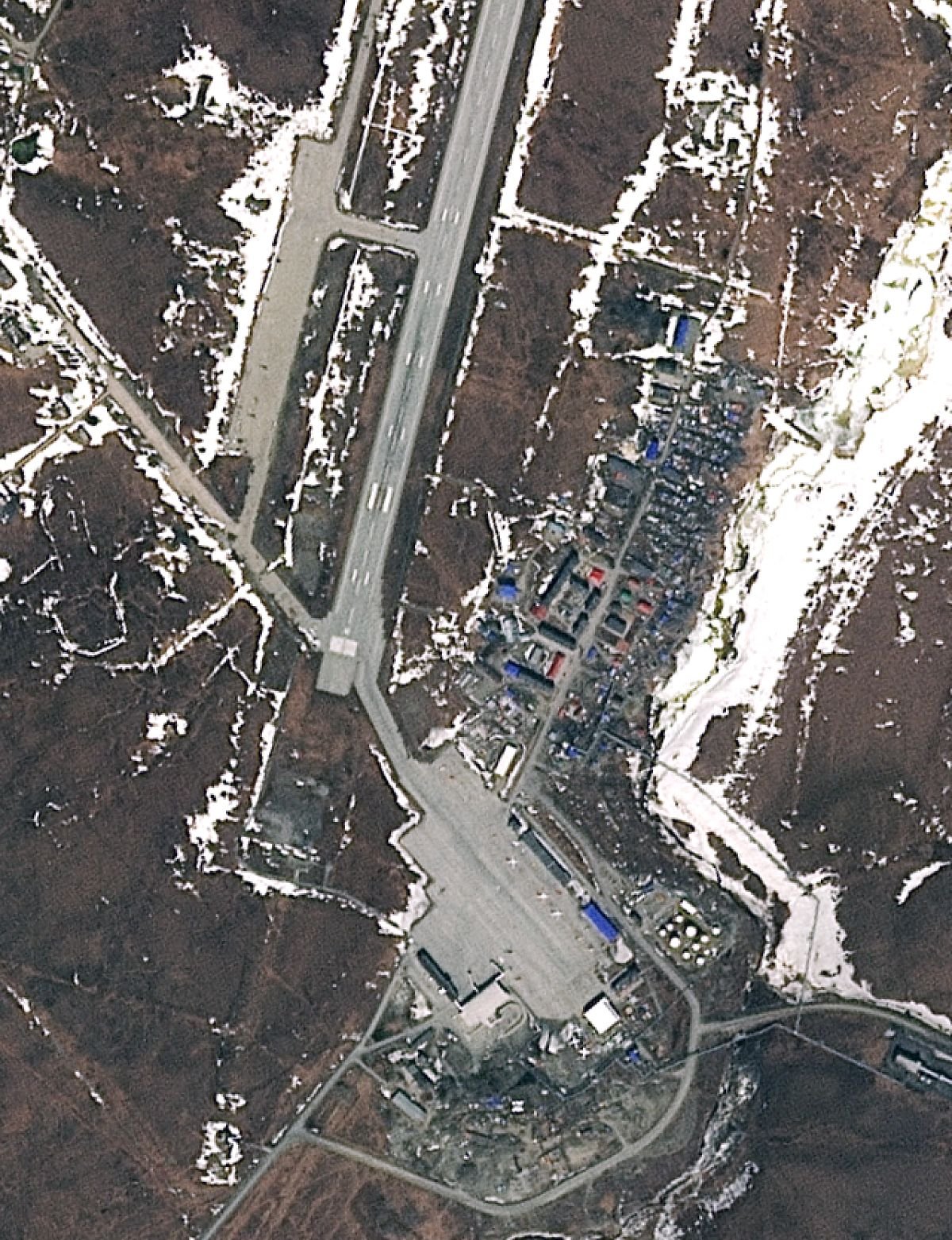Has Russia moved strategic aviation nearer to Alaska? What we know
Russia has likely not moved one of its nuclear-capable heavy bombers further from Ukraine, analysts and satellite imagery indicate after reports suggested Moscow had transferred one of its hefty Tu-160 supersonic aircraft closer to Alaska following extensive Ukrainian strikes on Russian airfields.
Ukraine said it hit 41 of Russia's expensive, hard-to-replace warplanes on June 1 in a meticulously timed operation across three different time zones using drones smuggled over the border.
Ukrainian outlet Defence Express reported on Thursday that Russia had relocated one of its Tu-160 strategic bombers to the Anadyr airfield in Russia's far eastern Chukotka region, citing satellite imagery captured by the European Space Agency's Sentinel satellites on June 4.
Satellite imagery provided to Newsweek by Planet Labs, captured of Anadyr on May 26 — prior to the audacious Ukrainian strikes — showed three aircraft lined up on the main apron. The image, while low quality, does not indicate the presence of the distinctively shaped Tu-160s, analysts said.
A separate image from June 3 showed four aircraft on the main apron of the base, but none of the aircraft — including the one that appeared since May 26 — appear to be the world's heaviest operational bomber, experts told Newsweek.
 A Tupolev Tu-160 heavy strategic bomber and an Ilyushin Il-78 aerial refueling tanker take part in a dress rehearsal of a military parade marking the 77th anniversary of the victory over Nazi Germany in World...
A Tupolev Tu-160 heavy strategic bomber and an Ilyushin Il-78 aerial refueling tanker take part in a dress rehearsal of a military parade marking the 77th anniversary of the victory over Nazi Germany in World War II, in Moscow, Russia, on May 7, 2022.
More
Anton Denisov / Sputnik via AP
A Tupolev Tu-160 heavy strategic bomber and an Ilyushin Il-78 aerial refueling tanker take part in a dress rehearsal of a military parade marking the 77th anniversary of the victory over Nazi Germany in World...
A Tupolev Tu-160 heavy strategic bomber and an Ilyushin Il-78 aerial refueling tanker take part in a dress rehearsal of a military parade marking the 77th anniversary of the victory over Nazi Germany in World War II, in Moscow, Russia, on May 7, 2022.
More
Anton Denisov / Sputnik via AP
It is fairly standard practice for militaries to move aircraft around and may not indicate anything more than a "sensible approach to looking after your aircraft," said Frank Ledwidge, a senior lecturer in Law and War Studies at Portsmouth University in the U.K. and a former British military intelligence officer.
Under the New START Treaty limiting nuclear weapons, strategic bombers have to be kept out in the open, Ledwidge added.
Russia will likely move around its aircraft more following the success of the Ukrainian strikes, retired Air Marshal Greg Bagwell, a former senior commander in the U.K.'s Royal Air Force, told Newsweek.
Kyiv said after the strikes, it had targeted at least one of Moscow's scarce A-50 airborne early warning and control aircraft and several long-range, nuclear-capable bombers across four air bases thousands of miles apart. Russia reported drone assaults on five bases, including strikes on a long-range aviation hub in the country's far east that Kyiv did not publicly acknowledge.
One Ukrainian official said 13 aircraft had been destroyed. Satellite imagery from the Siberian air base of Belaya and Olenya, an Arctic base in Murmansk—just two of the targeted bases—showed several destroyed Tu-95 and Tu-22 bombers. Ukraine said it had also attacked the Ivanovo airbase northeast of Moscow and Dyagilevo in the Ryazan region.
The Belaya airfield sits just shy of 3,000 miles from Ukraine.
 Satellite imagery, provided to Newsweek by Planet Labs, shows four aircraft on the main apron at the Anadyr airbase in Russia's Chukotka region close to Alaska on June 3, 2025. None of the aircraft pictured...
Satellite imagery, provided to Newsweek by Planet Labs, shows four aircraft on the main apron at the Anadyr airbase in Russia's Chukotka region close to Alaska on June 3, 2025. None of the aircraft pictured are Russia's Tu-160 heavy nuclear-capable bombers, analysts said.
More
Planet Labs
Satellite imagery, provided to Newsweek by Planet Labs, shows four aircraft on the main apron at the Anadyr airbase in Russia's Chukotka region close to Alaska on June 3, 2025. None of the aircraft pictured...
Satellite imagery, provided to Newsweek by Planet Labs, shows four aircraft on the main apron at the Anadyr airbase in Russia's Chukotka region close to Alaska on June 3, 2025. None of the aircraft pictured are Russia's Tu-160 heavy nuclear-capable bombers, analysts said.
More
Planet Labs
At least six Russian Tu-95MS and four Tu-22M3 aircraft appear to have been destroyed, Justin Bronk, a senior research fellow for airpower at the U.K.-based Royal United Services Institute (RUSI), said in recent days.
While unlikely to hack away at how many aerial assaults Russia can mount on Ukraine, the simultaneous strikes known as Operation Spiderweb caused roughly $7 billion in damage, according to Kyiv, and exposed how vulnerable airfields and their aircraft now are to drone strikes while landing an embarrassing slap on the Kremlin.
U.S. President Donald Trump said earlier this week that Russian President Vladimir Putin had "very strongly" insisted he would retaliate for the strikes.
 Satellite imagery, provided to Newsweek by Planet Labs, shows three aircraft on the main apron at the Anadyr airbase in Russia's Chukotka region close to Alaska on May 26, 2025.
Satellite imagery, provided to Newsweek by Planet Labs, shows three aircraft on the main apron at the Anadyr airbase in Russia's Chukotka region close to Alaska on May 26, 2025.
Planet Labs
Satellite imagery, provided to Newsweek by Planet Labs, shows three aircraft on the main apron at the Anadyr airbase in Russia's Chukotka region close to Alaska on May 26, 2025.
Satellite imagery, provided to Newsweek by Planet Labs, shows three aircraft on the main apron at the Anadyr airbase in Russia's Chukotka region close to Alaska on May 26, 2025.
Planet Labs
The main base in Russian territory where the operation was masterminded was "directly next to" an FSB regional headquarters, Ukraine's President, Volodymyr Zelensky, said as he praised the "brilliant" operation. Russia's FSB domestic security agency is the main descendant of the Soviet-era KGB.
Russia used a Tu-160 in intensive overnight missile and drone strikes across Ukraine, Kyiv's air force said on Friday.
Moscow fired more than 400 attack drones, six ballistic missiles, 38 cruise missiles and one anti-radar air-to-surface missile at the war-torn country overnight, according to the air force.
Ukraine's military separately said on Friday it had hit Dyagilevo in fresh strikes and the Engels long-range aviation hub in the Saratov region.
Newsweek has reached out to the Russian Defense Ministry for comment via email.